Index
The Edge HD4 is based on the same miniature chassis as the Edge HD3. In terms of aesthetics and build quality, we have no complaints. However, during our HD3 review we noticed that it can generate quite a bit of noise. The HD4 is a different beast, with a different CPU, so things could be different this time around.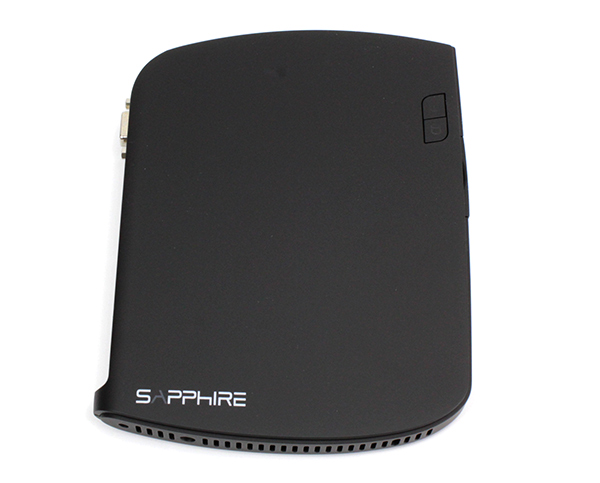
The right mirrors the left side and the only difference is that there are no buttons on this side.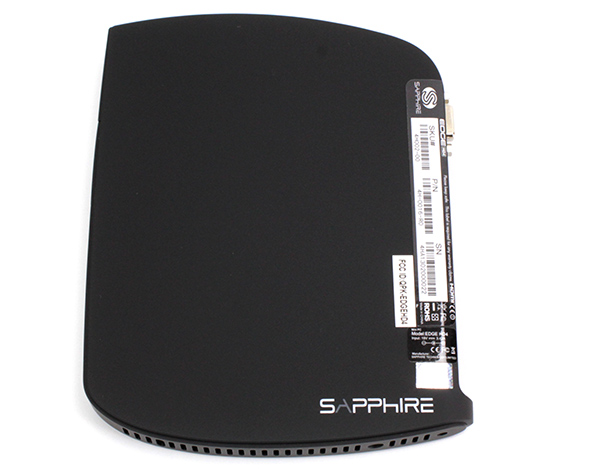
You will notice that there are no air vents on either side, so the HD4 relies on a few openings at the bottom and top to ensure airflow. This also means that it needs to be mounted upright to ensure proper cooling, as hot air will naturally circulate from the bottom to the top of the chassis.
One of the first things you will have to do when setting up the Edge HD4 is to attach the desktop stand.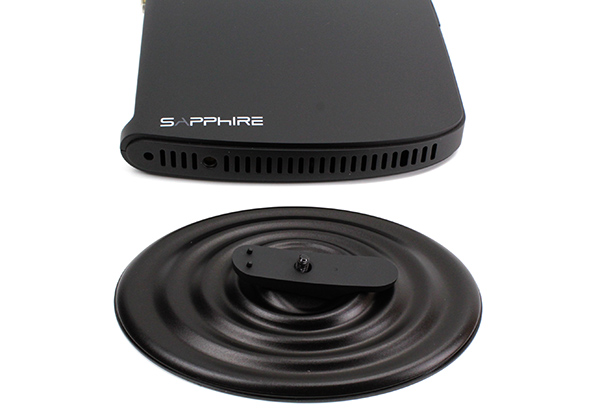
The desktop stand is made from metal and it has the thumb screw in the middle. All you have to do is align the stand with the base of the Edge HD4 and twist the screw firmly into place, much like on any monitor. Once it’s installed on the stand the Edge HD4 ends up in vertical position, but in spite of the low weight the whole rig feels pretty stable.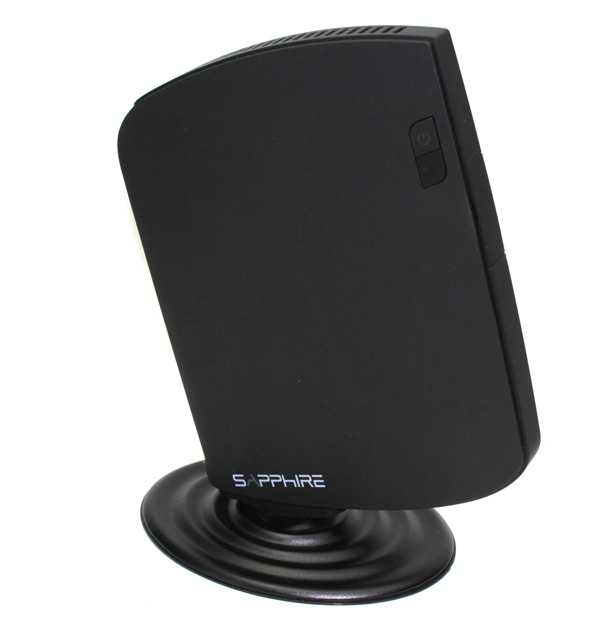
Sapphire decided to ship a VESA mount only with the new Edge VS, series but not with the Edge HD4 and Edge HD3. With a VESA mount we could easily place the Edge HD4 on the back of a TV. Sadly, with the transition to thin and stylish monitors with LED backlighting, VESA mounts are going out of fashion quicker than Gangnam Style. Most monitors no longer support them due to their thin design.
Sapphire did not use cheap, glossy plastics for the Edge HD4 / Edge HD3. Instead, it opted for a rubberized matte finish. It feels durable and looks pretty nice, too.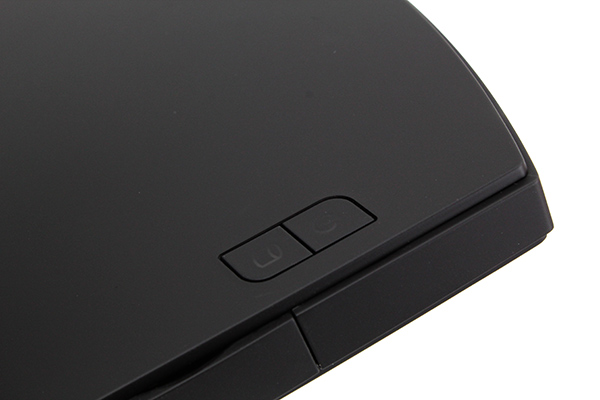
The power button is the only button on the Edge HD4. It features a power indicator light underneath. The HDD activity indicator is the same size as the power button and it’s is placed right next to it. There is no reset switch, which is the case with most other nettops or small-PCs as well.
The HD4 features one USB 3.0 port that will come in quite handy for speedy external storage. The Edge HD3, which is AMD-based, comes with two USB 3.0 ports.
The USB 3.0 port is placed at the front, along with a USB 2.0 port but they are not visible. They are hidden under a little protective flat as shown on the image below. The cover is held in place with a rubber catch so it will not be lost.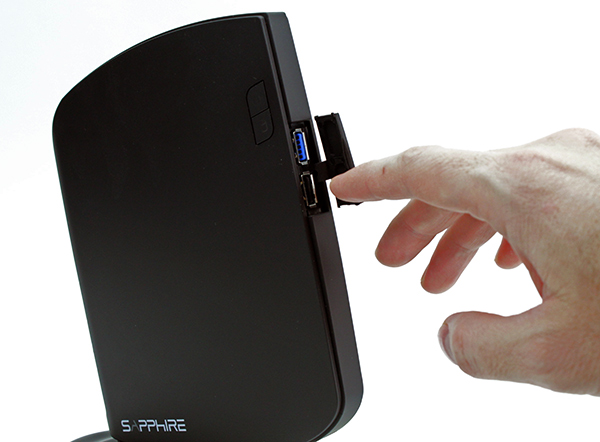
On the rear of the unit you will find the rest of the ports, including video outs, one RJ-45 Gigabit Lan, two USB 2.0 ports, one Line-in (3.5mm jack), one Audio-out (3.5mm jack), and DC In connector. Sapphire opted for one HDMI and one VGA output. DVI displays can be connected using the HDMI to DVI adapter. The bundled HDMI cable is 1.5 meters long. Nothing out of the ordinary here.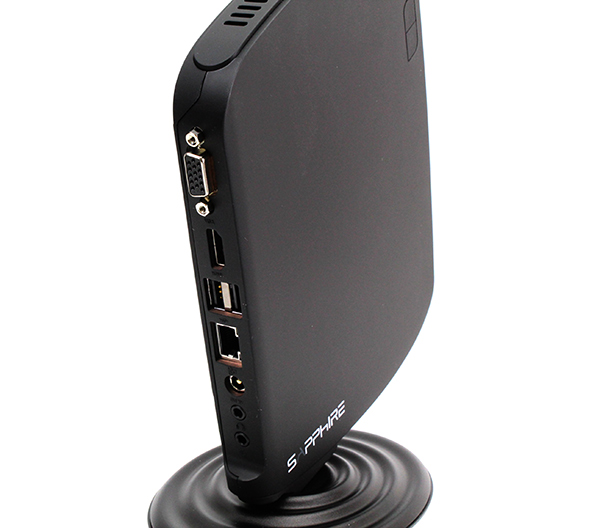
In case you are wondering why the video connectors, which use relatively heavy cables, are not placed at the bottom for added stability, the answer is simple. The connectors are placed close to the CPU, which also houses the embedded graphics core. In order to facilitate better cooling, the CPU is placed near the top, which means hot air won’t have to circulate around the chassis to exist the top vent.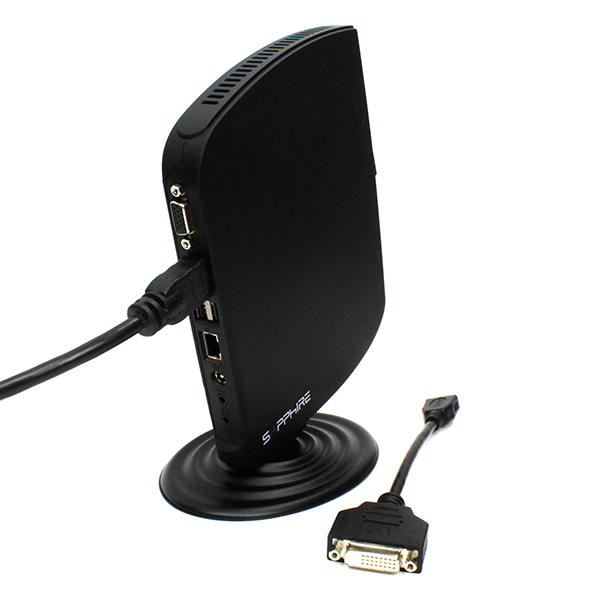
Some vendors ships wireless adapter in a form of a USB stick but Sapphire decided to use built-in wireless (802.11n) adapter. We think it’s a better solution.
We appreciate the fact that Sapphire decided to place all audio connectors at the back. This is not always the case with nettops, and although some users like to have easy access to audio jacks for headphones, placing the jacks at the back is a much better choice for HTPCs connected to a bunch of speakers. Nobody likes to see their new toy behind a bunch of cables and that’s why we were surprised by the decision to place the only USB 3.0 connector at the front.
